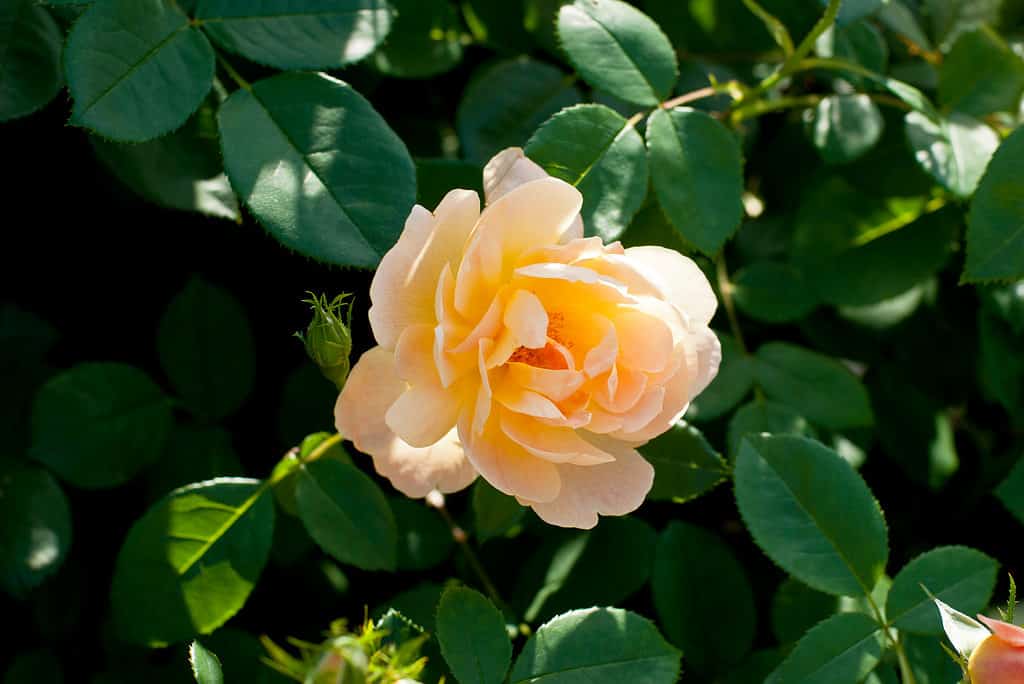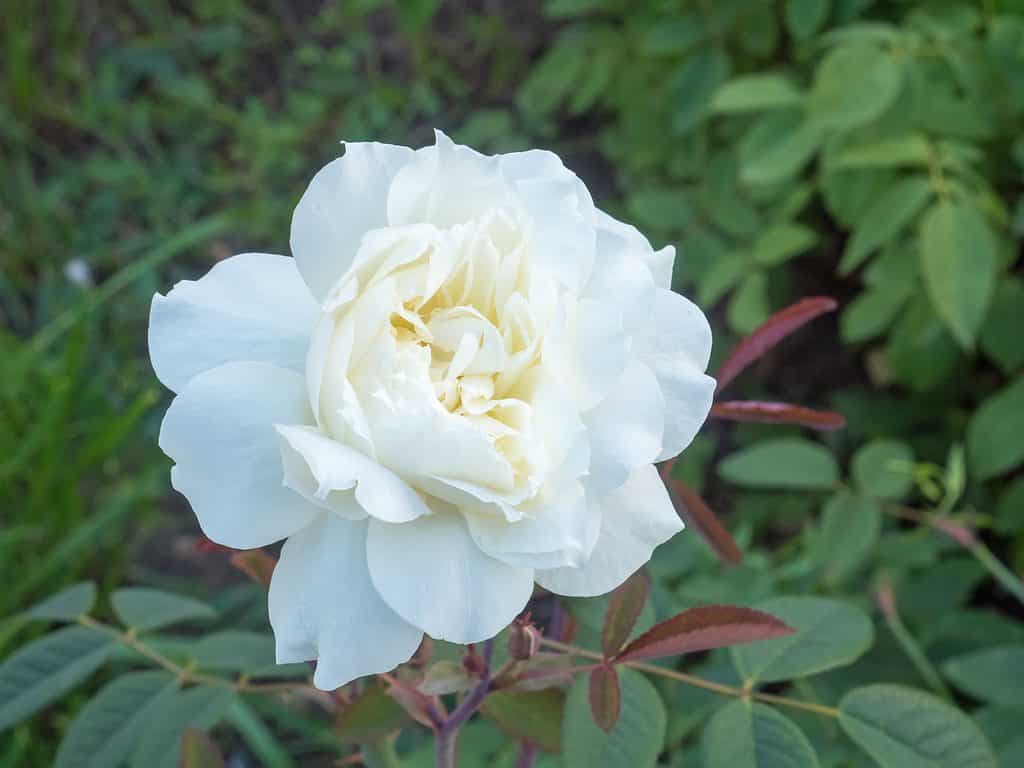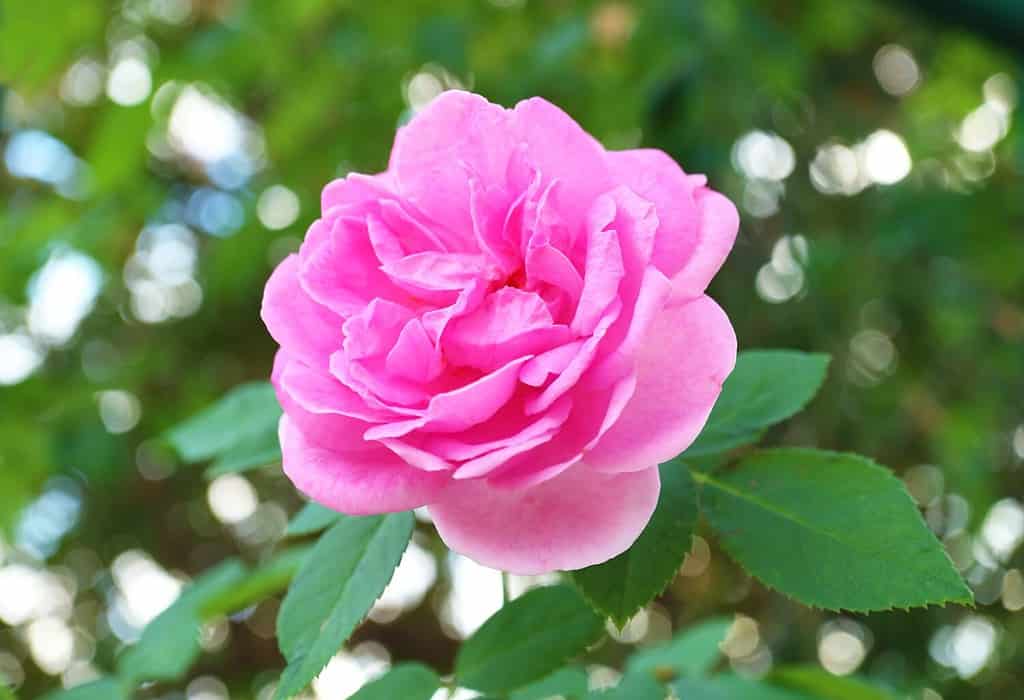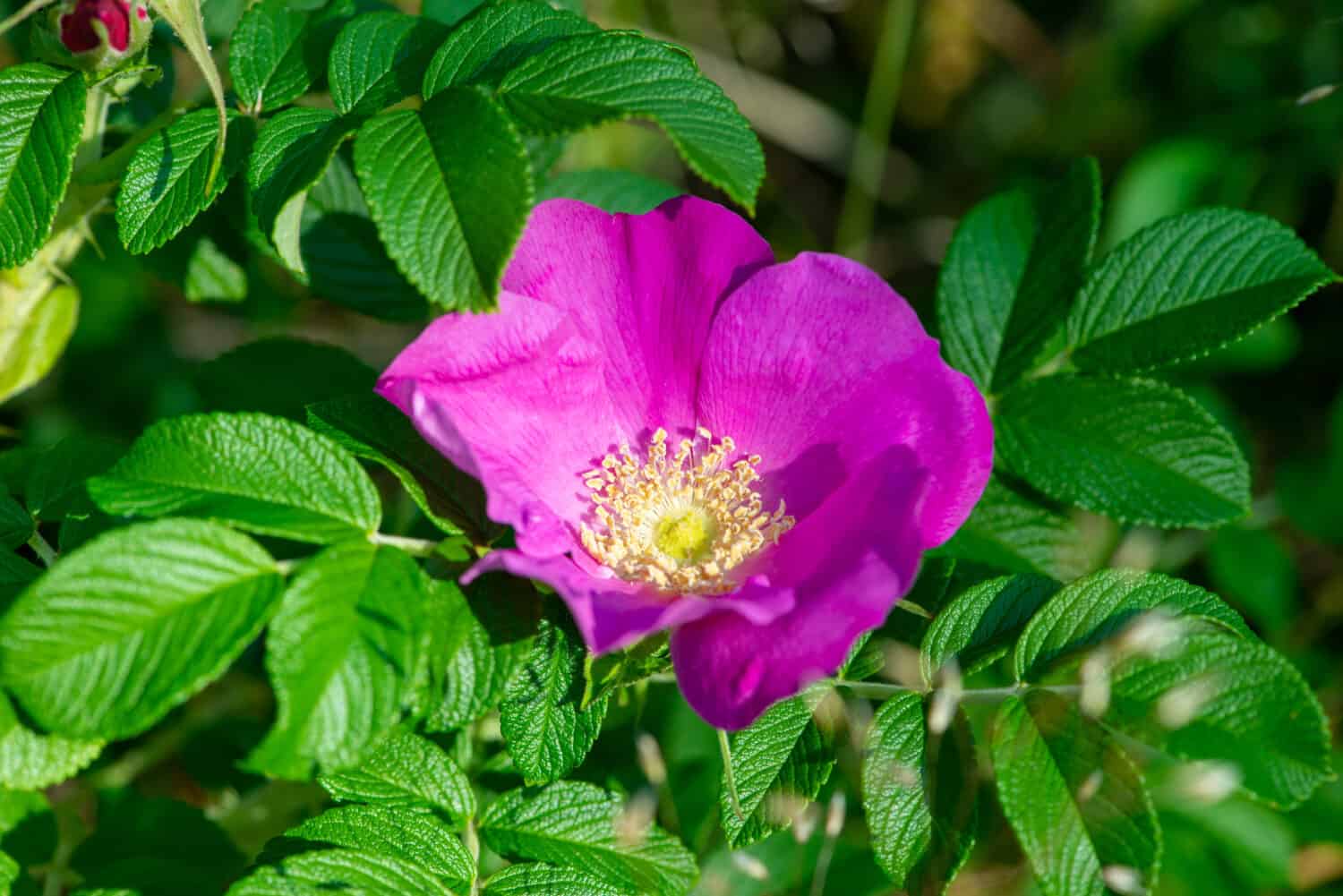Oklahoma is a fringe state with a constant debate about whether it’s Southern or a part of the Midwest. The climate offers a taste of each, making it difficult to plan a rose garden. In this article, we’ll discover the best roses in Oklahoma for the climate so that you can choose the cultivars with the best chance of survival.
Let’s dig in!
Top Considerations for Roses in Oklahoma
Oklahoma spans USDA zones 6b-7a, making it ideal for most rose cultivars. The winters are moderate, with nighttime lows between 20-30° F and daytime highs of 40-50° F. Extreme cold spells are rare, contributing to the roses’ survival over the winter.
The main challenge with planting roses in Oklahoma is the heat and humidity during the summer months. Temperatures often exceed 100° F with high humidity, creating the perfect breeding ground for black spot fungus.
Above all, choosing disease-resistant rose cultivars is a must when growing roses in Oklahoma.
The Best Roses in Oklahoma
With such a warm climate, there’s no need to worry about cold hardiness. However, some rose cultivars offer more disease resistance than others. With that in mind, here are 10 of the best roses in Oklahoma for your garden.
1. Rosa ‘The Lark Ascending’
This stunning English rose is named for the classical composition by Ralph Vaughan Williams. This full, stunning bloom has a soft peach tone reminiscent of a summer sunrise. A shrub rose, the Lark Ascending’s full, heavy blooms add a touch of elegance.
The Lark Ascending is a David Austin original. It was cultivated for disease resistance, making it ideal for the humid Oklahoma summers. This stunning English rose will bloom continuously throughout the season and fares well in partial shade or full sunlight.
Many gardeners use The Lark Ascending as a privacy screen or hedge or as a border flower in pollinator gardens. With a soft, sweet aroma, you’ll love the scent of the blooms on a warm summer evening.

The Lark Ascending rose is a disease-resistant English rose.
©kidae/Shutterstock.com
2. Rosa ‘Susan Williams Ellis’
Rosa ‘Susan Williams Ellis’ is another David Austin original. This English rose is named for PortmeirionPottery founder Susan Williams Ellis, who often used roses in her designs.
This seemingly invincible bloom will thrive in both full sun and partial shade, regardless of placement. There have been no reports of black spot disease or other known rose ailments to date with this cultivar.
Like the Rosa ‘The Lark Ascending,’ many gardeners use this shrub rose as a border or barrier.

The Susan Williams-Ellis rose is named after a famous pottery maker and rose enthusiast.
©alexeyart1/Shutterstock.com
3. Rosa ‘Carefree Beauty’
Rosa ‘Carefree Beauty,’ also known as Carefree Wonder, was developed by horticulturist and professor Griffith Buck at the University of Iowa as a low-maintenance rose variety. Its name reflects its intended purpose of minimal care needs from gardeners. Carefree Beauty boasts a captivating display of vibrant pink petals, which are abundant and lush, creating a visually stunning spread.
Carefree Beauty exhibits excellent disease resistance, making it less susceptible to common rose ailments like black spots. This resilience makes it ideal for humid Oklahoma gardens.
The appeal of Rosa ‘Carefree Beauty’ extends beyond its beauty and strength. Gardeners value this rose variety for its contribution to pollinator gardens. Its attractive blooms act as a magnet for bees and butterflies.

Developed by Griffith Buck, Carefree Beauty is designed to thrive.
©lovelypeace/Shutterstock.com
4. Rosa ‘The Fairy’
The Fairy, classified as a miniature or dwarf variety, is a petite shrub rose that defies its delicate appearance. The Fairy is a Polyantha rose. The Polyantha rose family is renowned for its exceptional hardiness and is considered one of the toughest rose varieties available. Some people refer to these delicate blooms simply as fairy roses.
This award-winning rose captivates with its low-growing habit, forming a lush carpet of soft double blooms. The Fairy’s blossoms exhibit a gentle, muted shade of bubblegum pink, creating a delightful and subtle visual impact.
The Fairy rose is great for low-maintenance gardeners looking for a tough plant to withstand the Oklahoma summers.

Fairy roses are delicate, small, and tough.
©Fabrizio Guarisco/Shutterstock.com
5. Rosa ‘Lavender Crush’
Rosa ‘Lavender Crush’ is an otherworldly smoky purple color with lush double blooms that will transform your garden into a dreamscape. Some blooms have white or mauve outer petals, creating an eye-catching two-tone effect. This climbing rose has a citrusy aroma that soothes and relaxes.
Lavender Crush is low maintenance and disease resistant. Gardeners love adding this natural climber to a trellis or gazebo to add dimension to their garden.

Lavender Crush often has a white outer petal contrasting the smoky purple tone.
©Daria Minaeva/Shutterstock.com
6. Rosa ‘Moonlight in Paris’
Moonlight in Paris is a Floribunda Rose. This family of roses is a hybrid of the classic long-stem Hybrid Tea Rose and the resilient Polyantha rose. As such, the Moonlight in Paris offers exceptional disease resistance and large, showy blooms that are perfect for cut flower arrangements.
This disease-resistant rose has full, white blooms with subtle pink and peach notes. You can grow this showstopper in full sun for optimal growth. You can also grow these roses in pots with proper care.

With romantic pink and champagne hues, Midnight in Paris is beautiful.
©smhalv/Shutterstock.com
7. Rosa ‘Ballerina’
Rosa ‘Ballerina’ is a hybrid musk rose. While this family of roses is lesser-known, it offers exceptional value in humid climates. Hybrid musk roses are incredibly disease resistant, rebloom throughout the summer, and have a lovely aroma.
The Ballerina rose is a shrub rose with clusters of white and pink blooms reminiscent of a hydrangea. These resilient blooms also thrive in partial shade environments. Expose parts of the plant to sunlight for optimal growth.
Ballerina has won the acclaimed Award of Garden Merit and is a favorite in wild-inspired gardens around the world. Add these small-but-mighty blooms to your garden to attract bees and butterflies.

Hybrid musk roses are resistant and fragrant.
©EQRoy/Shutterstock.com
8. Rosa ‘Voodoo’
Hybrid Tea roses are the iconic long-stemmed roses that many aspiring gardeners envision when they choose a cultivar. However, these blooms are notoriously difficult to care for and susceptible to pests and diseases.
Fortunately, some creative breeders have managed to develop cultivars that offer the iconic beauty of the long-stem rose with a balance of resilience. Rosa ‘Voodoo’ is one of those cultivars.
Rosa ‘Voodoo’ was introduced in 1984 as a disease-resistant Hybrid Tea cultivar. This versatile bloom comes in various shades of pink, yellow, and red. It’s fragrant with lush double blooms.
This heat-loving rose does best in USDA zone 7. If you live in USDA zone 6, consider covering the crown in burlap for the winter.

Voodoo roses come in a variety of colors.
©Min Wan/Shutterstock.com
9. Rosa ‘Olympiad’
Like Rosa ‘Voodo,’ Rosa ‘Olympiad’ was cultivated as a disease-resistant, lower maintenance alternative to the traditional Hybrid Tea rose. Olympiad competes directly with the world-famous Mr. Lincoln— the iconic long-stemmed red rose.
Like Mr. Lincoln, Olympiad is a long-stemmed single bloom in a vibrant shade of red. This heat-loving, disease-resistant cultivar is a winner of the prestigious All-America Rose Selections.
Like Voodoo, this cultivar performs best in USDA zone 7. If you live in USDA zone 6, consider covering the crown in burlap for the winter.

‘Olympiad’ is a hardy alternative to world-renowned
Rosa‘Mr. Lincoln’.
©JHVEPhoto/Shutterstock.com
10. Rosa Rugosa
Rosa rugosa, commonly known as beach roses or salt-spray roses, is a hardy species renowned for its ability to thrive along the shores of Southern Asia. These roses, also called rugosa roses, exhibit a distinctive charm with their five-petaled blossoms and captivating fragrance.
Their coastal origins make Rosa rugosa a hardy, humidity-loving rose species perfect for Oklahoma.
Some popular cultivars include Rosa rugosa ‘Alba’ and Rosa rugosa ‘Yankee Lady.’

The Rugosa Rose is one of the hardiest roses available today.
©iStock.com/vasare
Tips for Keeping Roses in Oklahoma
Here are some tips to help you maintain your roses in Oklahoma and enhance their chances of thriving:
- Opt for disease-resistant rose varieties.
- Ensure ample air circulation around your roses by spacing them appropriately.
- Stay vigilant and regularly monitor your roses for signs of black spots. Trim back affected leaves as soon as possible.
- Utilize rich and loamy soil that contains an abundance of organic content to provide optimal growing conditions.
- Monitor specific USDA zone requirements and overwinter accordingly.
By following these straightforward guidelines, you can provide your roses with the necessary care and support they need to thrive in Oklahoma.
Thank you for reading! Have some feedback for us? Contact the AZ Animals editorial team.








